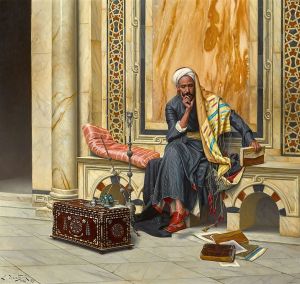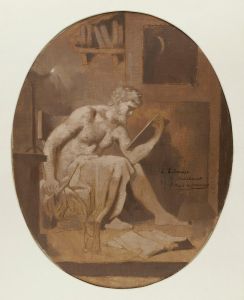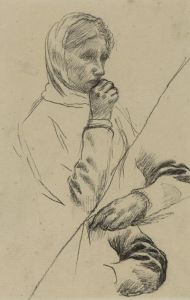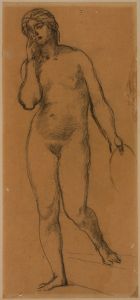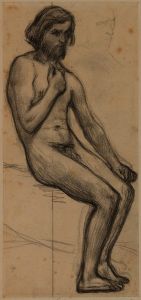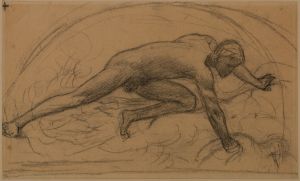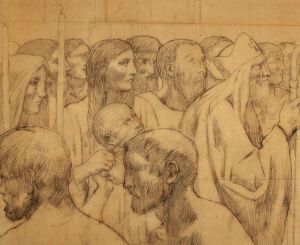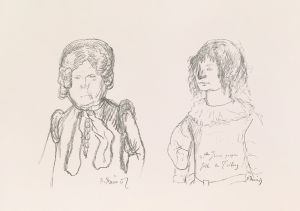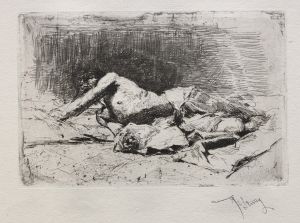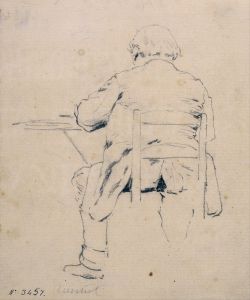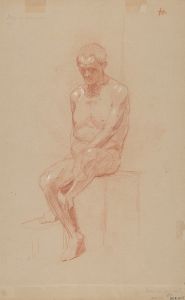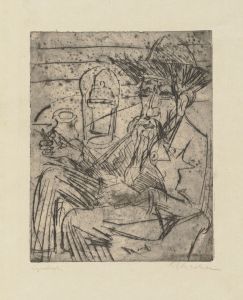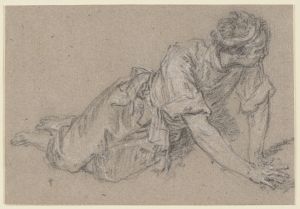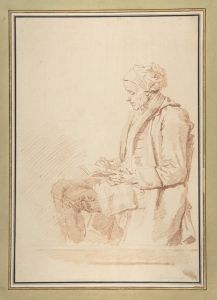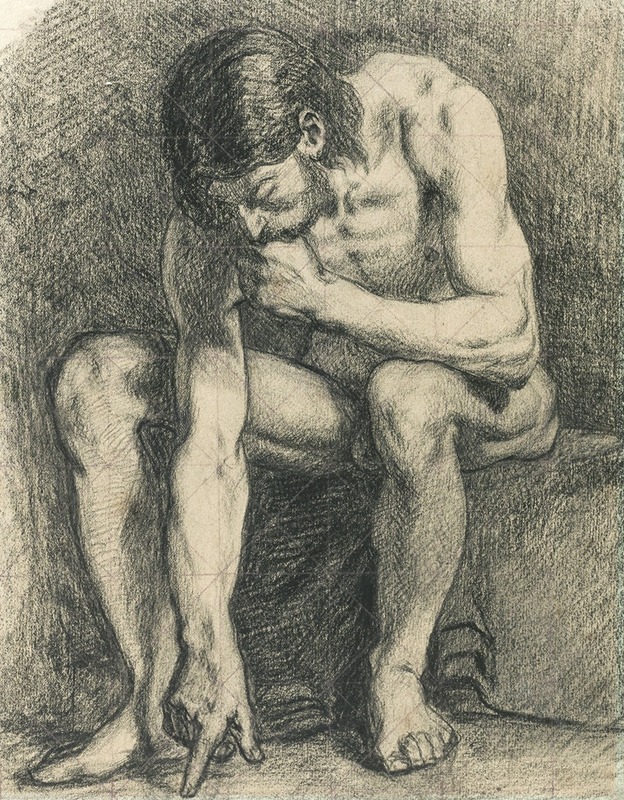
Homme assis nu, écrivant par terre avec son doigt
A hand-painted replica of Pierre Puvis de Chavannes’s masterpiece Homme assis nu, écrivant par terre avec son doigt, meticulously crafted by professional artists to capture the true essence of the original. Each piece is created with museum-quality canvas and rare mineral pigments, carefully painted by experienced artists with delicate brushstrokes and rich, layered colors to perfectly recreate the texture of the original artwork. Unlike machine-printed reproductions, this hand-painted version brings the painting to life, infused with the artist’s emotions and skill in every stroke. Whether for personal collection or home decoration, it instantly elevates the artistic atmosphere of any space.
Pierre Puvis de Chavannes, a prominent French painter of the 19th century, is known for his distinctive style and significant contributions to the Symbolist movement. One of his notable works is "Homme assis nu, écrivant par terre avec son doigt" (Nude Man Sitting, Writing on the Ground with His Finger). This painting exemplifies Puvis de Chavannes' unique approach to composition, color, and thematic exploration.
Pierre Puvis de Chavannes was born on December 14, 1824, in Lyon, France. He initially pursued an education in engineering but later shifted his focus to painting, studying under various artists, including Eugène Delacroix and Thomas Couture. Puvis de Chavannes developed a style characterized by its simplicity, muted color palette, and allegorical content, often drawing inspiration from classical antiquity and mythology.
"Homme assis nu, écrivant par terre avec son doigt" depicts a nude male figure seated on the ground, engaged in the act of writing with his finger. The setting is minimalistic, with a focus on the human form and the contemplative action of the subject. This painting reflects Puvis de Chavannes' interest in the human condition, introspection, and the timeless nature of human activities.
The composition of the painting is carefully balanced, with the figure placed centrally, drawing the viewer's attention to the act of writing. The use of subdued colors and soft lines creates a serene and meditative atmosphere, inviting viewers to reflect on the significance of the scene. Puvis de Chavannes often employed such techniques to evoke a sense of calm and timelessness in his works.
Puvis de Chavannes' contributions to the art world extend beyond his individual paintings. He was a co-founder of the Société Nationale des Beaux-Arts, an organization that played a crucial role in promoting contemporary art in France. His work influenced many artists of his time and later, including the Symbolists and Post-Impressionists, who admired his ability to convey profound themes through simplicity and restraint.
Throughout his career, Puvis de Chavannes received numerous commissions for public murals, which further established his reputation as a leading artist of his era. His murals can be found in prominent locations such as the Panthéon in Paris and the Boston Public Library. These large-scale works often explore themes of patriotism, human endeavor, and the relationship between humanity and nature.
"Homme assis nu, écrivant par terre avec son doigt" is a testament to Puvis de Chavannes' mastery of the human form and his ability to imbue simple scenes with deep meaning. The painting remains an important example of his work, showcasing his distinctive style and thematic interests. Puvis de Chavannes' legacy continues to be celebrated for its contribution to the development of modern art and its enduring influence on subsequent generations of artists.
Pierre Puvis de Chavannes passed away on October 24, 1898, in Paris, leaving behind a rich body of work that continues to be studied and admired for its artistic and historical significance.





